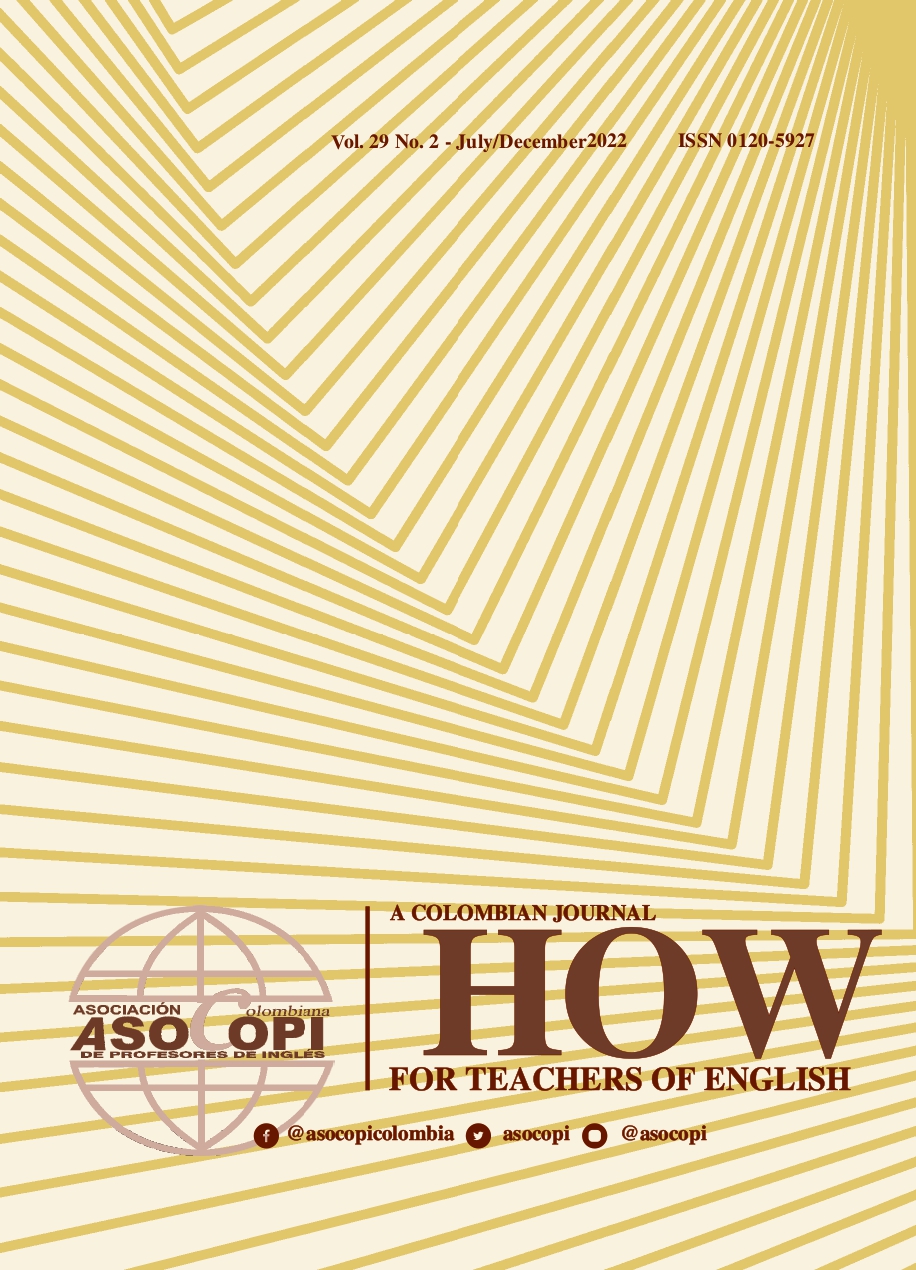Exploring the Contribution of Self-Assessment Checklists to Improve Oral Presentations
Main Article Content
Abstract
This action research aims at exploring the contribution of self-assessment checklists on improving oral presentations of two participants that were taking an initial-level English as a second language course at a technician professional institute in Talcahuano, Chile. The intervention was carried out in four weekly sessions in which the participants were trained on the different criteria to assess their oral presentations. The participants self-assessed their work with a checklist and performed a second presentation based on their first self-assessment. Analytic rubrics were also used as an external assessment to compare results from the checklists. At the end of the intervention, a semi-structured interview was conducted to obtain the participants’ perceptions about the process. Findings reveal that by developing autonomy, language awareness, and self-reflective skills, the use of the self-assessment checklist supported the participants not only to improve their oral presentation in overall aspects, mainly in fluency and pronunciation aspects, but also to make positive changes in their confidence and expectations about their performance.
Article Details

This work is licensed under a Creative Commons Attribution-NonCommercial-NoDerivatives 4.0 International License.
The authors of the manuscripts accepted for publication in HOW journal are required to sign a nonexclusive license agreement allowing ASOCOPI to reproduce the full text on the Internet or in any other available source. Authors retain copyright of their manuscripts with the following restrictions: first publication is granted to ASOCOPI; nonexclusive agreements with third parties can be established as long as the original publication in the HOW journal is properly acknowledged.
References
Al-Issa, A. S., & Al-Qubtan, R. (2010). Taking the Floor: Oral Presentations in EFL Classrooms. TESOL Journal, 1(2), 227–246. https://doi.org/10.5054/tj.2010.220425
Andrade, H. L., & Heritage, M. (2018). Using formative assessment to enhance learning, achievement, and academic self-regulation. Routledge.
Birjandi, P., & Tamjid, N. H. (2010). The Role of Self-Assessment in Promoting Iranian EFL Learners' Motivation. English Language Teaching, 3(3), 211-220.
Black, P., & Wiliam, D. (1998). Assessment and Classroom Learning. Assessment in Education: Principles, Policy & Practice, 5(1), 7–74. https://doi.org/10.1080/0969595980050102
Boud, D. (1995). Enhancing learning through self-assessment. Routledge Falmer.
Braun, V., & Clarke, V. (2006). Using thematic analysis in psychology. Qualitative Research in Psychology, 3(2), 77-101.
Brown, H. D. (2003). Language Assessment: Principles and Classroom Practices. Pearson Education.
Brown, J. D., & Hudson, T. (1998). The Alternatives in Language Assessment. TESOL Quarterly, 32(4), 653. https://doi.org/10.2307/3587999
Burns, A. (2010). Doing Action Research in English Language Teaching. A Guide for Practitioners. Routledge. https://doi.org/10.1016/j.system.2010.06.005
Chalkia, E. (2012). Self-assessment: an alternative method of assessing speaking skills. Research Papers in Language Teaching & Learning, 3(1).
Cheng, L., & Fox, J. D. (2017). Assessment in the language classroom: teachers supporting student learning. Macmillan Publishers Limited.
Duque, A., & Cuesta, L. (2015). Boosting vocabulary learning through self-assessment in an English language teaching context. Assessment & Evaluation in Higher Education, 42(3), 398-414.
Ekbatani, G., & Pierson, H. D. (2000). Learner-directed assessment in ESL. Lawrence Erlbaum Associates.
Florez, M. A. C. (1999). Improving Adult English Language Learners’ Speaking Skills. ERIC Digest ED435204. Retrieved December 12, 2019 from ERIC database.
Goh, C. C. M., & Burns, A. (2012). Teaching Speaking: A Holistic Approach. Cambridge University Press.
Green, A. (2014). Exploring language assessment and testing: language in action. Routledge.
Harmer, J. (2001). The practice of English language teaching. Longman.
Harris, M., & McCann, P. (1994). Assessment: handbooks for the English classroom. Heinemann.
Hedge, T. (2000). Teaching and learning in language classroom. Oxford University Press.
Irons, A. (2008). Enhancing learning through formative assessment and feedback. Routledge.
Kvale, S., & Brinkmann, S. (2009). Interviews: Learning the craft of qualitative research interviewing. Sage.
Li, X. (2018). Teaching English oral presentations as a situated task in an EFL classroom: A quasi-experimental study of the effect of video-assisted self-reflection. Revista Signos, 51(98), 359–381. https://doi.org/10.4067/s0718-09342018000300359
Luoma S. (2004). Assessing speaking. Cambridge University Press.
O’Malley, J. M., & Pierce, L. V. (1996). Authentic assessment for English language learners: practical approaches for teachers. Longman.
Reitmeier, C. A. & Vrchota, D. A. (2009). Self‐Assessment of Oral Communication Presentations in Food Science and Nutrition. Journal of Food Science Education, 8. 88 - 92. https://doi.org/10.1111/j.1541-4329.2009.00080.x
Phan, T. X., & Phuong, H. Y. (2017). Using Analytic Rubric for Speaking Self-Assessment: EFL Students' Perceptions and Challenges. IOSR Journal of Research & Method in Education (IOSRJRME), 07(03), 34–39. https://doi.org/10.9790/7388-0703043439
Ur, P. (2012). A course in language teaching. (2nd ed.). Cambridge University Press.
Yan, Z., & Brown, G. T. L. (2016). A cyclical self-assessment process: towards a model of how students engage in self-assessment. Assessment & Evaluation in Higher Education, 42(8), 1247–1262. https://doi.org/10.1080/02602938.2016.1260091





